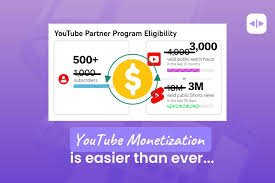The Future of Earning in 2025: Effective Monetization Methods for Entrepreneurs
The Future of Earning in 2025: Effective Monetization Methods for Entrepreneurs As we look ahead to 2025, the world of online entrepreneurship is rapidly changing, offering countless opportunities for individuals to earn money and build successful businesses. With advancements in technology, shifts in consumer behavior, and the rise of new digital platforms, the possibilities for monetization are growing faster than ever before. For entrepreneurs, staying ahead of these trends is crucial to unlocking new revenue streams and ensuring long-term success. In this post, we’ll explore the future of earning in 2025 and highlight the most effective monetization methods that entrepreneurs should focus on to maximize their income. 1. Leveraging Artificial Intelligence and Automation In 2025, artificial intelligence (AI) and automation will play a major role in how entrepreneurs manage their online businesses. AI tools are becoming increasingly sophisticated, enabling business owners to streamline operations, improve customer experience, and personalize marketing strategies—all of which can lead to higher conversions and increased revenue. Entrepreneurs can use AI-driven platforms to analyze consumer behavior, automate repetitive tasks, and even create content more efficiently. For example, AI-powered chatbots can handle customer service inquiries, allowing entrepreneurs to focus on scaling their businesses. Additionally, AI-based recommendation systems can drive more sales by suggesting products to users based on their past behaviors. Tip: Incorporating AI into your business strategy will not only save time but also enhance your ability to reach and engage with your audience, creating more opportunities for monetization. 2. The Rise of NFTs and Digital Collectibles Non-fungible tokens (NFTs) and digital collectibles are continuing to gain traction in 2025, particularly in the worlds of art, gaming, and entertainment. For entrepreneurs in creative industries, NFTs offer a new way to monetize their work. By selling digital assets like artwork, music, or exclusive content as NFTs, creators can earn revenue from their digital creations in a secure and transparent way. NFTs also provide the added benefit of allowing creators to earn royalties from future resales of their tokens. This means that entrepreneurs can continue to benefit financially from their work as it is resold in the secondary market. Tip: If you’re a digital creator or artist, consider exploring the world of NFTs as a potential revenue stream in 2025. By combining creativity with blockchain technology, you can unlock new earning possibilities. 3. Online Courses and Educational Content: The Continuing Boom The demand for online education has skyrocketed in recent years, and 2025 is expected to see this trend continue. Entrepreneurs who are experts in their fields can capitalize on this demand by creating and selling online courses or offering coaching and consulting services. Platforms like Udemy, Teachable, and Skillshare make it easier than ever to share knowledge and monetize it. Online education not only provides a passive income stream but also positions entrepreneurs as thought leaders in their industries. As more people turn to online learning for career development, entrepreneurs can build a loyal following of students eager to learn from their expertise. Tip: Create a niche course or offer specialized training that addresses the specific needs of your target audience to stand out in the crowded online education space. 4. Subscription-Based Services and Recurring Revenue Models In 2025, the subscription-based business model is becoming more popular than ever. Entrepreneurs across industries—whether in fitness, content creation, or SaaS (Software as a Service)—are shifting toward recurring revenue streams through memberships and subscription services. This model offers a stable and predictable income, which is particularly valuable for entrepreneurs who want to build long-term businesses. Platforms like Patreon, Substack, and even Shopify allow entrepreneurs to easily set up subscription services for their audience, offering exclusive content, access to special offers, or premium services for a monthly fee. Tip: Offer value to your subscribers through exclusive content, personalized services, or unique products to encourage customer retention and reduce churn. 5. Influencer Marketing and Sponsored Content Influencer marketing is a growing trend in 2025, with more brands partnering with influencers to promote their products and services. Entrepreneurs who have a strong online presence—whether through social media platforms, blogs, or YouTube channels—can leverage influencer marketing by becoming brand ambassadors or creating sponsored content. The future of influencer marketing lies in authenticity and engagement. Brands are increasingly looking for micro-influencers who have a highly engaged and loyal audience, as these influencers tend to have higher conversion rates compared to those with massive but less engaged followings. Tip: If you are an influencer or have a personal brand, focus on building trust with your audience to attract brands that align with your values and create genuine, sponsored content partnerships. 6. E-commerce and Dropshipping in 2025 E-commerce is booming in 2025, with millions of entrepreneurs setting up online stores to sell physical and digital products. The e-commerce space has become more accessible than ever, with platforms like Shopify, WooCommerce, and BigCommerce providing entrepreneurs with the tools they need to start selling online. Dropshipping, in particular, continues to be a popular way for entrepreneurs to start an online business without holding inventory. By partnering with suppliers who handle product storage and shipping, entrepreneurs can focus on marketing and customer acquisition while minimizing overhead costs. Tip: Focus on trending products and leverage social media and paid advertising to drive traffic to your e-commerce store. Offering great customer service and efficient delivery will help you stand out from the competition. 7. Social Media Monetization and Content Creation Social media platforms are becoming more focused on helping creators earn money directly through their content. Features like Instagram’s affiliate marketing tools, TikTok’s Creator Fund, and YouTube’s Super Chats are just a few examples of how platforms are enabling monetization for content creators. Entrepreneurs with a strong social media presence can take advantage of these features to generate income from sponsored posts, ads, live streams, and product promotions. By consistently engaging with your followers and producing high-quality content, you can turn your social media accounts into a profitable business. Tip: Diversify your content across multiple platforms and create unique, engaging content



















